- Home
- Alison Weir
The Lady in the Tower: The Fall of Anne Boleyn Page 6
The Lady in the Tower: The Fall of Anne Boleyn Read online
Page 6
It did not silence her critics. In October 1534 the French ambassador, Jean de Dinteville—who appears to the left of Georges de Selve, Bishop of Latour, in Holbein’s famous double portrait, The Ambassadors, informed Francis I that “the lower people are so violent against the Queen that they say a thousand ill and improper things against her, and also against those who support her in her enterprises.”57 Chapuys was more happy than most to be able to report evidence of Anne’s unpopularity, but although he was biased, he was probably not exaggerating, for throughout the years 1533 to 1536, official records and other sources contain numerous instances of people being arrested for uttering opprobrious words about the Queen.58 In 1535 the unpopular Queen was perceived to be responsible for the executions of the much respected Sir Thomas More, John Fisher, Bishop of Rochester, and several Carthusian monks, all of whom had refused to acknowledge the validity of her marriage;59 this was the final straw for many conservatives.
Early in February 1536 an Oxfordshire midwife, Joanna Hammulden, on being told by a grateful patient that “she was worthy of being midwife to the Queen of England,” said that she would be pleased to serve a queen “provided it were Queen Katherine, but she was too good for Queen Anne, who was a harlot.” She added that “it was never merry in England when there were three queens in it”—a pointed reference to Jane Seymour, whose dalliance with the King was now evidently known beyond the court—and she trusted “there will be fewer shortly.” For uttering these words, Joanna Hammulden was imprisoned.60 Her slander was typical of the crimes the authorities were now dealing with on a fairly regular basis. Opposition to Anne could not be silenced.
Over the years, Anne had managed to alienate several of the King’s friends and nobles, among them her own uncle and former supporter, Thomas Howard, Duke of Norfolk, whose sister was Anne’s mother, Elizabeth Howard. Norfolk was now sixty-three, “small and spare of stature, and his hair black.” His portrait by Holbein depicts a granite-faced martinet, but his contemporaries thought him “liberal, affable, and astute,” “a man of the utmost wisdom, solid worth, and loyalty.” As Earl Marshal of England and the realm’s leading peer, the duke was one of the foremost members of Henry VIII’s Privy Council, having “great experience in the administration of the kingdom,” an admirable grasp of affairs, and ruthless ambition.61
There was no love lost between Anne and Norfolk: two strong characters, they had quarreled too often, and in 1531 the duke had predicted that she would be “the ruin of all her family.”62 By 1533 they were barely on speaking terms, and Norfolk had taken to comparing her unfavorably to Queen Katherine;63 in 1535, Anne’s former suitor, Henry Percy, Earl of Northumberland (whose marriage to her had been prohibited by Cardinal Wolsey in 1523), “began to complain of the wickedness of this King’s woman, saying that lately she used more insulting language to Norfolk than one would to a dog, such that he was obliged to leave the room, and moved to heap abuse on the said Lady. One of the least offensive things he called her was ‘great whore.’”64
Six months later Chapuys wrote that Anne did not “cease day and night to procure the disgrace of the Duke of Norfolk, whether it be because he has spoken too freely of her, or because Cromwell, desiring to lower the great ones, wishes to commence with him.”65 Norfolk had not profited as he might have hoped to from his niece’s elevation; he was further disadvantaged by his traditional Catholic views. Ten years later, in the Tower and facing execution himself (although the King did not, in the end, sign the death warrant), he reminded the lords of the council “what malice” his niece, “as pleased the King’s Highness to marry, did bear unto me,” saying it “was not unknown to such ladies as kept [her] in this house”—he meant during her imprisonment in the Tower.66
Norfolk was one among the many enemies Anne had made at court. “There is little love for the one who is queen now, or for any of her race,” Jean de Dinteville reported.67 Anne, whose father was one of the “new men” who had made their fortunes at the Tudor court, had been insolent toward the older nobility, who detested her;68 the Imperialists hated her because she was the staunch friend of the French, had supplanted Katherine of Aragon, deprived Lady Mary of her rights, and entertained what they regarded as heretical views. She had become a target for political opposition, for she also made enemies of those whose influence she had overridden, or who were opposed to the radical religious reforms she enthusiastically promoted. Alexander Aless, the Scots reformist, was to tell Elizabeth I in 1559 that, because Anne had pushed Henry toward an alliance with the German Lutherans, “all the bishops who were opposed to the purer doctrine of the Gospel, and adhered to the Roman Pontiff, entered into a conspiracy against your mother.” Given Aless’s friendship with Cranmer, he was in a position to know.
Abroad, in Catholic Europe, Anne’s reputation was dismal; she was the subject of obscene propaganda, and was frequently reviled as a whore, an adulteress, and a heretic. There would be few to champion this unpopular queen in her hour of need.
“Having thus so many, so great factions at home and abroad set loose by the distorted favor of the King, and so few to show themselves for her, what could be?” asked George Wyatt, with mournful hindsight. “What was otherlike but all these lighting on her at once should prevail to overthrow her?”
As early as January 8, the day after Katherine of Aragon’s death, the King took the first significant step toward renewing his former friendship with Katherine’s nephew, the Emperor. On that day, Thomas Cromwell, the King’s Principal Secretary, wrote a letter to Sir John Wallop and Stephen Gardiner, Bishop of Winchester, England’s envoys at the Imperial court, informing them that “considering the death of the Lady Dowager, and as the Emperor has now no occasion of quarrel” and might seek the King’s friendship, they were to try to “hasten agreement before the King is pressed by the Emperor” and seek advantageous terms. The King commanded Cromwell to add a postscript telling the ambassadors that, now that Katherine was no more, they need not be so accommodating toward the French king—who had, of course, long showed himself friendly toward Anne Boleyn.69
Henry also told Chapuys he was eager for an alliance “now that the cause of our enmity no longer exists.” Cromwell, who was the King’s chief and most trusted minister, and who was to play a crucial part in Anne Boleyn’s downfall, had for some time been anxious to promote a new Anglo-Imperial pact.70
Cromwell, the son of a Putney blacksmith,71 was a former mercenary who had traveled in Italy in his youth, and there conceived an admiration for the political ideas of Machiavelli. He had been (in his own words) “a ruffian”72 before he settled down and became a merchant and property lawyer, in which latter capacity he came to the notice of Cardinal Wolsey, the King’s former chief minister, who found him to be vigorously hardworking and “ready at all things, evil or good.”73 He had remained in the cardinal’s employ until Wolsey’s fall in 1529.
Cromwell then rose rapidly to political prominence, impressing the King with his efficiency, and undertaking “to make him the richest sovereign that ever reigned in England.”74 He had been preferred to the Privy Council in 1531, then made Chancellor of the Exchequer in 1533; he was also Master of the Jewel House and Master of the Rolls, and such was his grasp of affairs and administration that in April 1534 he was appointed Principal Secretary to the King, an office that—thanks to his abilities and machinations—would soon become of supreme political importance; effectively, he became Henry’s chief adviser, having “risen above everyone, except it be the Lady … Now [wrote Chapuys] there is not a person who does anything except Cromwell.”75 It is clear, though, that Cromwell was not yet as powerful as he would later become, especially within the Privy Chamber, where the King’s favored intimates had the sovereign’s ear and controlled patronage.
Hans Holbein’s portrait of Cromwell shows a burly, black-haired man with watchful, porcine eyes, and betrays none of the personal charm or conviviality that won Master Secretary a circle of admiring friends. Chapuys found him “a pe
rson of good cheer, gracious in words and generous in actions.” But while Cromwell was known for his affability, there was steel beneath the charm. He was clever, resourceful, intelligent, and able, an administrative and financial genius, knowledgeable, pragmatic, hard-headed and ruthless, all qualities that were much admired by—and useful to—the King. Cromwell adhered to Machiavelli’s principle that a prince may publicly be above reproach but might privately do evil or cruel things in order to maintain the stability of the state and ensure the greater good. George Cavendish, who had been his fellow servant in Wolsey’s household, thought Master Secretary one whom “all others did excel in extort[ing] power and insatiate tyranny.”76 Alexander Aless saw Cromwell as “the King’s ear and mind, to whom he entrusted the entire government of the kingdom.”
Cromwell now wielded authority by exercising his formidable talents, charming people into his confidence, or intimidating them with threats, overtly or by implication. Even though Henry VIII is now thought to have been the driving force behind the break with Rome and the revolutionary legislation of the Reformation,77 Cromwell was instrumental in implementing these changes and the propaganda of the New Monarchy, while the efficient spy network he had established—a web of paid informers and numerous grateful clients anxious to do him a service—would become a model for future governments, and brought him a wealth of confidential and sensitive information.
Controlling access to the King and occupying a position of enormous influence made Cromwell equally envied and resented, and while the nobles disdained him for his humble origins, they, like most people, feared him. But it was important to have such a powerful operator on one’s side. The Boleyns wasted no time in cultivating him, and he had risen to power with their support, to the extent that, in 1533, Anne Boleyn had referred to Cromwell as “her man.” As proponents of the Reformation and the royal supremacy, and advocates of religious reform, both shared, for a time, common aims.
Cromwell, a fellow reformist, had originally been Anne Boleyn’s staunch supporter and done all in his power to facilitate the annulment of the King’s first marriage; he agreed with Anne that Lady Mary’s precarious position was her own fault,78 and he was active in enforcing the King’s persecution of Katherine of Aragon; he told Chapuys in 1534 that a lot of trouble would have been avoided “if God had taken to Himself the Queen.”79 It was Cromwell who relayed orders from Henry and Anne to their daughter’s nurse, Lady Bryan; Cromwell, whose duties now encompassed such diverse responsibilities as the running of the royal nursery and preliminary preparations for the wholesale dissolution of the monasteries.
But, as Retha Warnicke has convincingly demonstrated, the notion of a political alliance between Anne and Cromwell has been largely overstated by modern historians, who have relied too heavily on the dispatches of Chapuys, and inferred too much from them. Nor is there any hard evidence to suggest that queen and secretary were allied in a court faction for the purpose of furthering reform. In fact, there are remarkably few known instances of their acting together: on the contrary, the evidence shows them usually to have operated independently of each other. By the summer of 1535 they were moving, crucially, in different directions, and Cromwell’s attitude toward Anne had changed, probably because she resented the more radical direction in which his planned closure of the monasteries was taking him: he was pushing for their wholesale dissolution, while she appears to have favored their reform.
Perhaps Anne had also come to resent—or even fear—Cromwell’s growing power as a threat to her own influence. She was a Francophile, while his instincts, honed by his good relations with the merchants of London, were beginning to lean toward the Empire, where they had their markets.80
In consequence of these fundamental differences, Cromwell and Anne—far from working together for a common aim—had become rivals for power. That was evident as early as June 1535, when Cromwell, bent on smoothing relations with the Emperor, discussed with an astonished Chapuys the desirability of restoring Mary to the succession, since she was loved by the people and would have a better chance of holding the throne than the young Elizabeth. He told the ambassador that if Anne learned of this, “she would live to see his head cut off.” But he remained unruffled. “I trust so much on my master that I fancy she cannot do me any harm,” he said comfortably, although his complacency would turn out to be misplaced. Chapuys could hardly believe what he was hearing. All I can say,” he observed incredulously, “is that everyone here considers him Anne’s right hand.” He could only conclude that Cromwell desired “to lower the great ones,” and assumed that he might begin with the Queen’s estranged uncle of Norfolk.81
Despite his earlier interest in a Protestant German alliance, Cromwell was now moving toward an Imperial one; in the wake of Katherine of Aragon’s death, the councillors increasingly pushed for that, and Master Secretary had no desire to put himself in an isolated position, and every reason to distance himself from the Queen. On the evening of January 29, the day Anne miscarried, he had a secret meeting with Chapuys to broach the subject of an Imperial alliance, and even said that Katherine’s death had been beneficial to relations between Henry and Charles. Cromwell had already anticipated that Anne might well prove an insurmountable obstruction, and the ambassador obviously felt the same way, for at that meeting he told Master Secretary that the world at large would never acknowledge her as the King’s lawful wife, although it might well be prepared to acknowledge any other lady whom Henry might marry.
Cromwell was aware of Anne’s continuing support for an alliance with the Lutheran princes; the English delegation was still at Wittenberg (it would not return until after May). She had good cause to oppose a pact with the Emperor, which was one reason why she was pushing Henry in the other direction. Alexander Aless, who had himself visited Wittenberg and embraced the doctrines of Martin Luther and Philip Melanchthon, held the biased opinion that Anne’s zeal for an alliance with German heretics was the reason why her enemies united against her, for there was always a risk that the King might succumb to her persuasions.
Cromwell evidently felt it would be useful to have Chapuys on his side. We do not know if Chapuys told Cromwell what Henry had reportedly said about having been seduced into his marriage by witchcraft, and taking another wife. But whether he did or not, the tenor of their conversation would have led both men to the unspoken conclusion that it would be in everyone’s interests for Henry to rid himself of his unpopular queen.
CHAPTER 3
The Frailty of Human Affairs
When Henry VIII left Greenwich early in February to go to London for the Shrovetide celebrations and the final session of the Reformation Parliament, which opened on February 4, he left Anne behind to recover and “to her own pursuits.”1 Chapuys believed the King was still angry with her, still hardly speaking to her, and that he had “shown his sentiments by the fact that, during these festive days, he is here, and has left her in Greenwich, whereas formerly he could not leave her for an hour.”2
Certainly that was how the situation must have appeared outwardly, yet Parliament’s business was exceptionally important, and Henry always made a point of being near at hand when crucial matters were being debated,3 while Anne would have needed time to recover from her miscarriage: this was, after all, an age in which women were expected to lie in bed for two weeks after parturition, so she could not have been expected to accompany the King to London just days after losing a baby of fifteen weeks’ gestation. Indeed, Henry would surely have preferred her to be with the court—and would indeed summon her back as soon as she had recovered—because he could not see Jane Seymour otherwise. For since the Queen was remaining at Greenwich, he was obliged, for propriety’s sake—his own household being an exclusively male preserve—to leave Jane there too.
Yet, proving that Anne was not entirely out of favor, Parliament passed legislation assuring the manors of “Hasyllegh,” Essex, and Collyweston, Northamptonshire, to the Queen.4 Collyweston had once been the property of Henry�
��s grandmother, Margaret Beaufort, and latterly in the hands of his bastard son, Henry FitzRoy, Duke of Richmond; the King must have approved Richmond giving Queen Anne that manor and palace in exchange for Baynard’s Castle and Durham House in London.5 This indicates that Henry was still determined outwardly to support Anne, that she still exerted some hold over him, and that Jane Seymour was, for the moment, just another passing fancy, like Mary Boleyn and Madge Shelton.
For all that, Anne must have been deeply unhappy at this time, mourning for her lost baby and fearing that she had lost her husband’s favor. Isolated at Greenwich, her only companions were her ladies and “Her Grace’s woman fool.”6 Anne was no dunce: having leisure to reflect on what had happened, she was probably wondering if Henry would abandon her. On March 6, Dr. Ortiz, the Emperor’s ambassador in Rome, would report to Empress Isabella that “La Ana fears now that the King will leave her to make another marriage.”7 There may have been more wishful thinking and garbled rumor in this than well-founded truth, but it was possibly not far off the mark.

 Richard III and the Princes in the Tower
Richard III and the Princes in the Tower Britain's Royal Families: The Complete Genealogy
Britain's Royal Families: The Complete Genealogy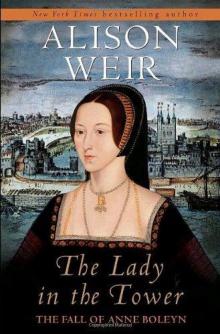 The Lady in the Tower: The Fall of Anne Boleyn
The Lady in the Tower: The Fall of Anne Boleyn Six Wives of Henry VIII
Six Wives of Henry VIII Elizabeth of York: A Tudor Queen and Her World
Elizabeth of York: A Tudor Queen and Her World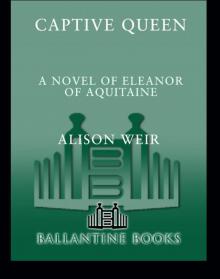 Captive Queen
Captive Queen Innocent Traitor
Innocent Traitor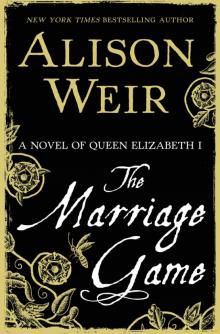 The Marriage Game
The Marriage Game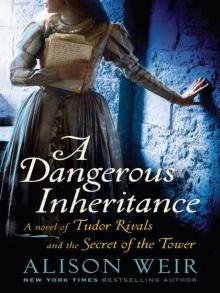 A Dangerous Inheritance
A Dangerous Inheritance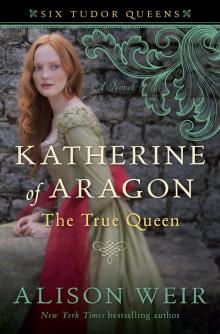 Katherine of Aragón: The True Queen
Katherine of Aragón: The True Queen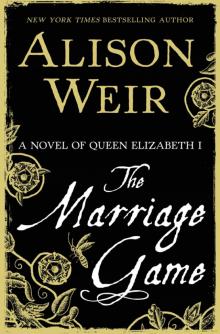 The Marriage Game: A Novel of Queen Elizabeth I
The Marriage Game: A Novel of Queen Elizabeth I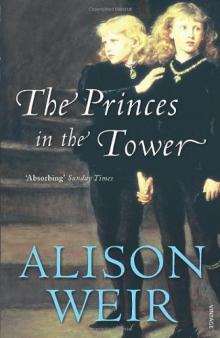 Princes in the Tower
Princes in the Tower Anne Boleyn: A King's Obsession
Anne Boleyn: A King's Obsession Traitors of the Tower
Traitors of the Tower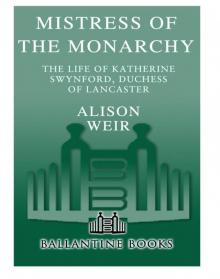 Mistress of the Monarchy: The Life of Katherine Swynford, Duchess of Lancaster
Mistress of the Monarchy: The Life of Katherine Swynford, Duchess of Lancaster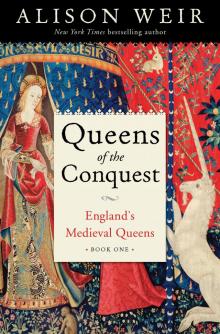 Queens of the Conquest: England’s Medieval Queens
Queens of the Conquest: England’s Medieval Queens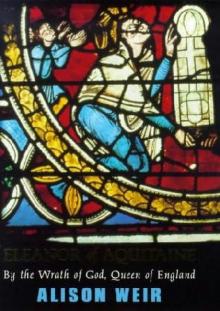 Eleanor of Aquitaine: A Life
Eleanor of Aquitaine: A Life Mary, Queen of Scots, and the Murder of Lord Darnley
Mary, Queen of Scots, and the Murder of Lord Darnley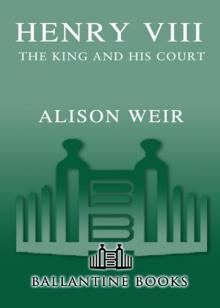 Henry VIII: The King and His Court
Henry VIII: The King and His Court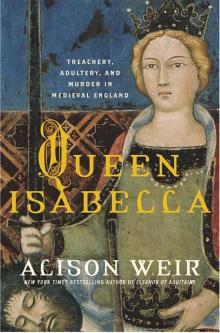 Queen Isabella: Treachery, Adultery, and Murder in Medieval England
Queen Isabella: Treachery, Adultery, and Murder in Medieval England Katheryn Howard, the Scandalous Queen
Katheryn Howard, the Scandalous Queen Arthur- Prince of the Roses
Arthur- Prince of the Roses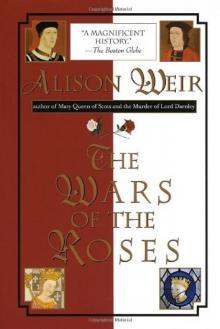 The Wars of the Roses
The Wars of the Roses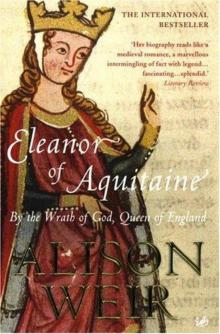 Eleanor of Aquitaine: By the Wrath of God, Queen of England
Eleanor of Aquitaine: By the Wrath of God, Queen of England Mary Boleyn: The Great and Infamous Whore
Mary Boleyn: The Great and Infamous Whore Jane Seymour: The Haunted Queen
Jane Seymour: The Haunted Queen Anna of Kleve, the Princess in the Portrait
Anna of Kleve, the Princess in the Portrait Lancaster and York: The Wars of the Roses
Lancaster and York: The Wars of the Roses The Grandmother's Tale
The Grandmother's Tale The Princess of Scotland (Six Tudor Queens #5.5)
The Princess of Scotland (Six Tudor Queens #5.5)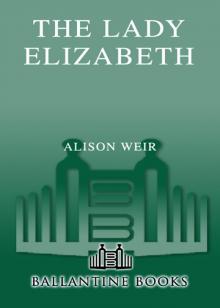 The Lady Elizabeth
The Lady Elizabeth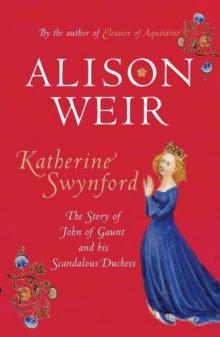 Katherine Swynford: The Story of John of Gaunt and His Scandalous Duchess
Katherine Swynford: The Story of John of Gaunt and His Scandalous Duchess The Curse of the Hungerfords
The Curse of the Hungerfords The Lost Tudor Princess: The Life of Lady Margaret Douglas
The Lost Tudor Princess: The Life of Lady Margaret Douglas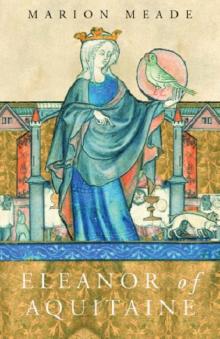 Eleanor of Aquitaine
Eleanor of Aquitaine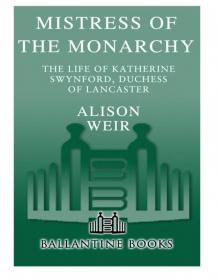 Mistress of the Monarchy
Mistress of the Monarchy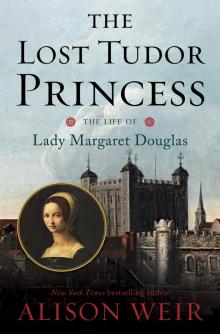 The Lost Tudor Princess
The Lost Tudor Princess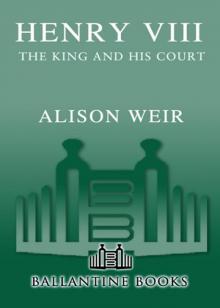 Henry VIII
Henry VIII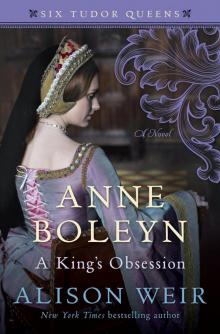 Anne Boleyn, a King's Obsession
Anne Boleyn, a King's Obsession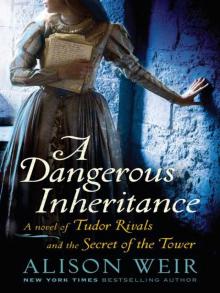 A Dangerous Inheritance: A Novel of Tudor Rivals and the Secret of the Tower
A Dangerous Inheritance: A Novel of Tudor Rivals and the Secret of the Tower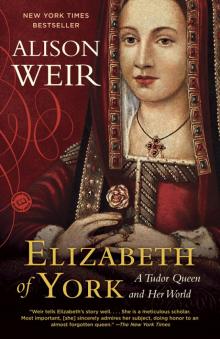 Elizabeth of York
Elizabeth of York Katherine of Aragon, the True Queen
Katherine of Aragon, the True Queen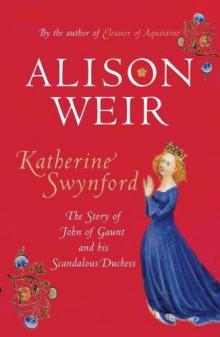 Katherine Swynford
Katherine Swynford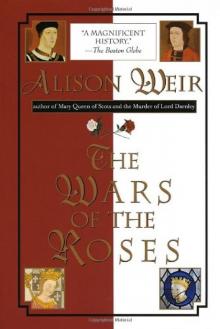 Wars of the Roses
Wars of the Roses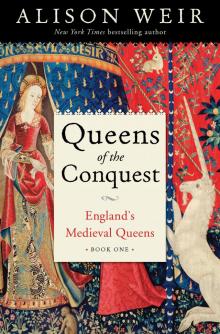 Queens of the Conquest
Queens of the Conquest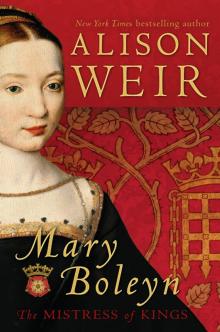 Mary Boleyn
Mary Boleyn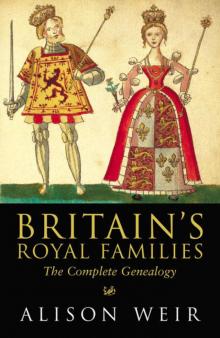 Britain's Royal Families
Britain's Royal Families The Tower Is Full of Ghosts Today
The Tower Is Full of Ghosts Today Life of Elizabeth I
Life of Elizabeth I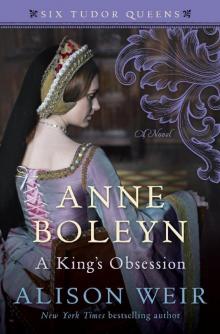 Anne Boleyn A King's Obssession
Anne Boleyn A King's Obssession Lancaster and York
Lancaster and York Jane Seymour, the Haunted Queen
Jane Seymour, the Haunted Queen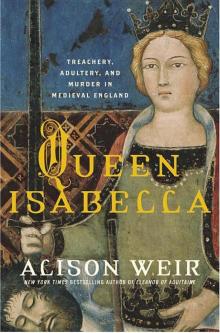 Queen Isabella
Queen Isabella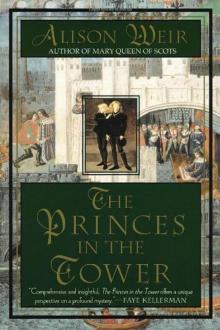 The princes in the tower
The princes in the tower